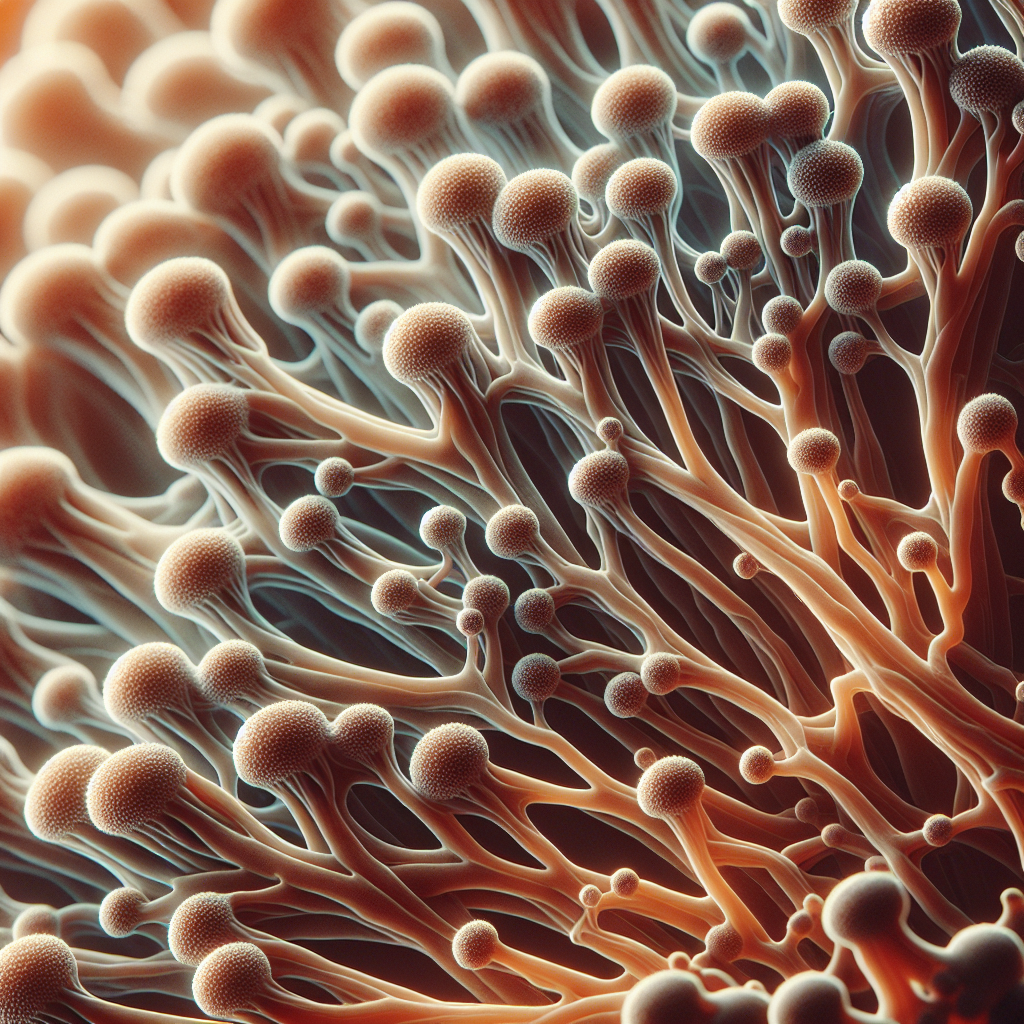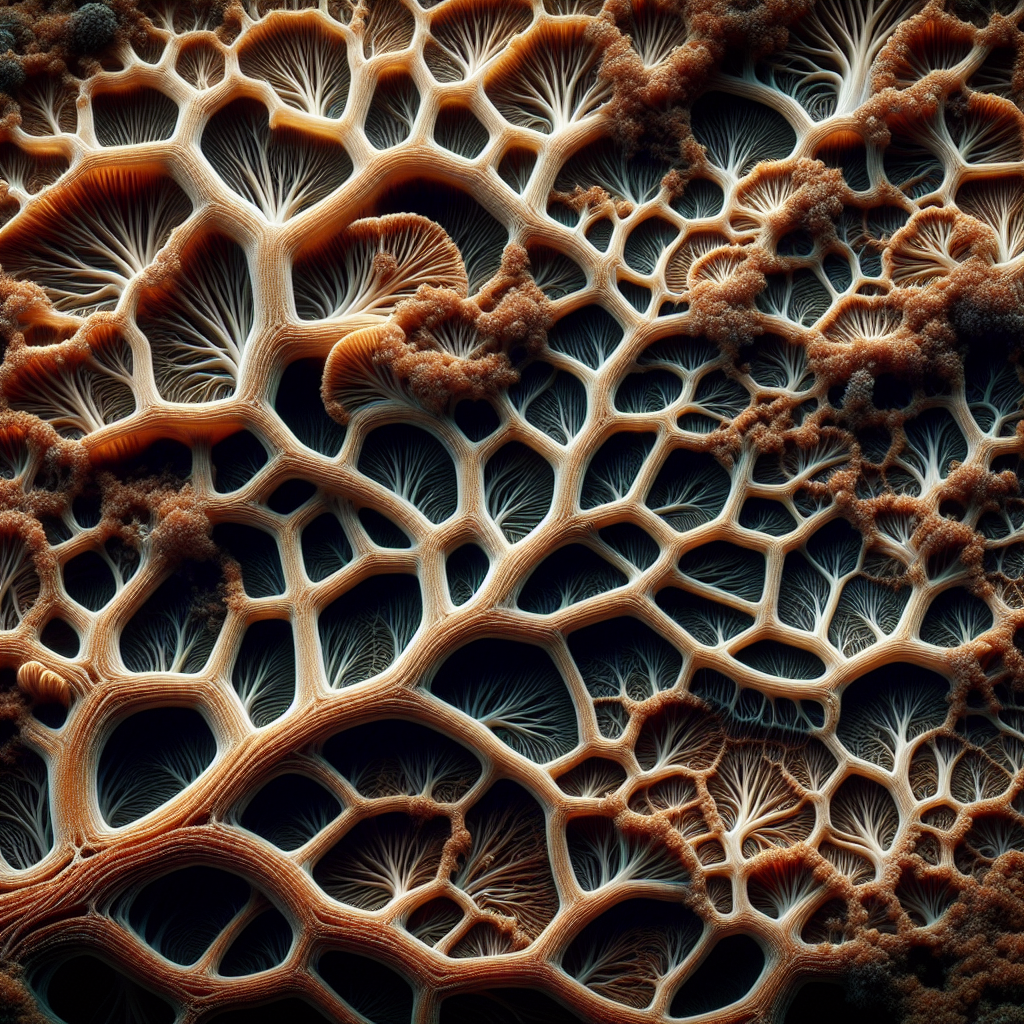In the realm of microscopic life and organic matter, many intricate networks of existence thrum silently beneath the surface, indeed beneath our very feet. Among them lies the structured, sprawling web of nature’s unsung heroes: the mycelium. This article offers an extensive examination of mycelium, the less glamourous yet indispensable part of a fungus’s life cycle. Furthermore, it addresses the pressing query, “Is mycelium real?” With a fusion of complex science simplified and mind-expanding revelations, this guide unravels the legitimate existence and functions of mycelium and how they silently shape the world around us. Hang on to your hats as you embark on a subterranean journey into the heart of one of nature’s most distinguished and least understood networks.

Understanding Mycelium
Mycelium refers to a network of intertwined, small thread-like structures known as hyphae. This delicate and intricate structure is a fundamental part of the life of mushrooms and fungi, acting as a foundation that allows them to thrive within various ecosystems.
Definition of Mycelium
Within the biology spectrum, mycelium is the part of a fungus that consists of a mass of branching, thread-like hyphae. It’s the main mode of vegetative growth, and it’s found beneath the surface of the growth medium, usually soil or rotten wood. It absorbs nutrients from the environment, preparing the food that enables the mushroom or fungus body to expand and reproduce.
Classification and Structure of Mycelium
Mycelium can broadly be classified into two categories based on their cell arrangement – monocentric and polycentric. The monocentric mycelium consists of individual cells connected end-to-end, while a polycentric mycelium comprises of a network of hyphae that are interconnected. Each hyphae in the mycelium structure consists of tubular walls surrounding the cytoplasm and vacuoles, functioning as a transport system for nutrients and other cellular materials.
The Biological role of Mycelium
Playing a significant role in the sustenance of ecological systems, mycelium is involved in nutrient absorption and distribution, facilitating the conversion of organic materials into plant accessible forms. Additionally, through a process known as mycorrhizal association, mycelium creates a symbiotic relationship with plant roots, boosting their nutrient uptake capacity. This relationship is a vital element of global carbon cycles, influencing the sequestration and storage of carbon within the soil.
The Ecology of Mycelium
Function in the Ecosystem
As an intrinsic part of many ecosystems, mycelium serves multiple roles. It regulates plant diversity by altering the availability of resources, modulates soil structure and chemistry, and controls the populations of disease-causing organisms. Additionally, mycelium provides essential nutrients for plants, insects, and numerous other organisms living within the ecosystem.
Interactions with Other Organisms
Mycelium often establishes symbiotic relationships with a wide range of organisms, most prominently with plants via mycorrhizal symbiosis. Through these symbiotic relationships, mycelium enhances nutrient uptake, promotes growth, and bolsters the plant’s resilience against diseases and pollutants. Moreover, mycelium also forms mutualistic relationships with certain insects, aiding in their nutrition, immunity, and habitat creation.
Mycelium and Soil Health
Mycelium improves the health of the soil through its decomposing capabilities, converting complex organic molecules into simpler compounds that are readily absorbed by plants. This decomposition process also helps enrich the soil with vital nutrients, boost its fertility, and promote overall soil structure and stability. Additionally, mycelium aids in stabilizing soil aggregates, thereby minimizing soil erosion.
The Life Cycle of Mycelium
Growth and Development
The growth and development of mycelium occurs after the germination of fungus spores, each developing into individual hyphae that grow and branch out, eventually leading to the formation of a mycelial network. This network expands into the growth medium, absorbing nutrients, and preparing for the next stages of reproduction and dispersal.
Reproduction and Dispersal
Mycelium involves both asexual and sexual methods for reproduction and dispersal. In asexual reproduction, mycelia produce spores that are then dispersed by wind or water. Sexual reproduction involves the fusion of two compatible mycelia, leading to the formation of fruiting bodies containing spores, which are then released into the environment.
Survival and Longevity
Mycelium exhibits a robust survival mechanism due to its network-like structure and the capacity to adapt to various environmental conditions, including scarcity of nutrients and adverse climatic changes. Depending on the species and environmental factors, mycelium can also remain dormant but viable for years, awaiting favorable conditions to initiate growth and reproduction.

Mycelium Mould: A Natural Decomposer
Role in Organic Matter Decay
Renowned as nature’s premier decomposer, mycelium plays a crucial role in the decay of organic matter. By secreting enzymes, mycelium breaks down complex organic materials, including wood and plant debris, into simpler substances. This process contributes to the recycling of nutrients within the ecosystem.
Nutrient Cycling and Mycelium
Beyond decomposition, mycelium is a vital player in nutrient cycling. By breaking down organic matter, it releases and recycles nutrients back into the soil, thereby ensuring their availability for utilization by other organisms, including plants. Without this, nutrients would remain locked within dead organisms, causing a nutrient deficiency in the ecosystem.
Mycelium’s Role in Carbon Sequestration
Importantly, mycelium also contributes to carbon sequestration, an essential process in mitigating climate change. By breaking down organic matter, mycelium helps store carbon within the soil. This reduces the amount of carbon dioxide in the atmosphere, thereby combatting global warming.
Mycelium and Fungi: The Connection
Role of Mycelium in Fungi Growth
Mycelium constitutes the vegetative part of a fungal organism, playing a central role in the growth of fungi. It absorbs nutrients from the environment, allowing the fungi to grow and develop. Additionally, mycelium’s branching network structure provides a greater surface area for nutrient absorption, supporting the fungi in thriving even in nutrient-sparse environments.
Types of Fungi Linked to Mycelium
Almost all kinds of fungi, including yeasts, molds, and mushrooms, have mycelium as a fundamental part of their structure. From the well-known mushroom species such as Agaricus bisporus, to molds like Aspergillus and Penicillium, and even to yeast forms such as Candida, mycelium forms an integral part of their lifecycle.
Mycelium as Fungal Connective Tissue
Essentially, mycelium is the ‘connective tissue’ that holds a fungus together. It forms an intricate network that supports the growth and development of the fungal organism, connecting and transporting nutrients throughout the fungus and serving as the basis for growth and reproduction.
Mycelium: Eco-Friendly Building Material
Uses in Construction Industry
The dense and durable nature of mycelium, alongside its natural resistance to fire and water, makes it an exceptional bio-material for construction. From insulation and acoustic panels to furniture and even structural bricks, mycelium offers numerous uses within the construction industry.
Sustainability and Environmental Impact
Harnessing mycelium as a building material offers considerable environmental benefits. Being a renewable and biodegradable material, it contributes to reducing the construction sector’s carbon footprint. Additionally, the production process of mycelium-based materials is generally less energy-intensive compared to traditional building materials.
Process of Producing Mycelium Materials
The production of mycelium-based materials generally entails the inoculation of a suitable substrate (like agricultural waste) with mushroom spawn. Over time, the mycelium grows and binds the substrate together, forming a solid, durable mass. This is then dried to halt growth, resulting in a sturdy, lightweight, and environmentally friendly material.
Culinary Uses of Mycelium
Mycelium in Food Production
Beyond its ecological and construction applications, mycelium is redefining possibilities within the food world. Being a rich source of protein, vitamins, and other essential nutrients, mycelium is cultivated to produce various food items, including meat substitutes, flavor enhancers, and even a base for fermented drinks.
Health Benefits of Consuming Mycelium
Several species of mycelium are edible and have significant health benefits. They are rich in dietary fiber, support digestive health, boost the immune system, and can help regulate cholesterol levels. Furthermore, mycelium-based foods are also a rich source of essential vitamins and minerals, contributing to overall wellness.
Popular Mycelium-Derived Foods
One of the well-known mycelium-derived foods is the mycelium burger, which closely mimics the texture and taste of traditional meat. Additionally, mycelium is also used to produce unique foods like ‘mycoprotein’ and even to make fermented drinks, offering a vast range of culinary possibilities.
Medical and Therapeutic Implications of Mycelium
Bioactive compounds of Mycelium
Mycelium is a rich source of bioactive compounds, including polysaccharides, ergosterol, and triterpenoids, which show significant therapeutic efficacy. Such compounds are touted for their immunomodulatory, anti-inflammatory, anticancer, and antimicrobial properties.
Potential Health Applications
The bioactive compounds derived from mycelium have been explored for potential applications in various health-related areas. These include boosting the immune system, managing diabetes, reducing inflammation, and even slowing down the progression of certain cancers. In addition, research has found that these compounds can also enhance cognitive function and heart health.
Research and Advances in Mycelium Medicine
Multiple studies are underway, and many have provided proof of the potential of mycelium in medicine. Areas like neurology, oncology, immunology have seen substantial inputs from mycelium-based research. While implementation on a broad scale might still require regulatory considerations and further studies, the potential of mycelium in healthcare is undeniable.
Testing and Laboratory Cultivation of Mycelium
Growing Conditions for Mycelium
Mycelium usually grows best in dark, damp, and warm environments, with an optimal temperature of around 23-25 degrees Celsius. They thrive on a wide variety of substrates, from soil to agricultural waste, depending on the species.
Methods of Mycelium Cultivation
Mycelium cultivation typically involves a combination of sterile technique and controlled environmental conditions. Sterilized substrate, usually grain or wood chips, is inoculated with fungal spores or tissue, and then maintained under suitable conditions to let the mycelium grow and colonize the substrate.
Challenges and Solutions in Mycelium Research
Mycelium research can face various hurdles, from contamination issues to optimizing growth conditions for each species. However, advances in research techniques and the development of robust protocols have made it possible to overcome these challenges. The creation of sterile environments, use of selective media, and genomic tools are some of the solutions being implemented to address these issues in mycelium research.
Future Prospects and Applications of Mycelium
Innovative Uses of Mycelium
With their unique properties and biodegradability, mycelium-based materials are expected to find innovative applications in various sectors. These could include creating biodegradable packaging materials, generating biofuels, or even developing wearable that can monitor our health.
Potential Impact on Industry
The economic potential of mycelium is vast, as they can revolutionize various sectors, from construction and food to medicine and environmental remediation. Businesses leveraging mycelium technologies can create sustainable and circular business models, promoting material efficiency and waste reduction.
Concerns and Considerations for Mycelium Use
While mycelium holds tremendous promises, several considerations need addressing. These include issues related to large-scale production, regulatory hurdles, and the potential impact of genetically modified mycelium strains on the environment. However, with ongoing advancements, these challenges are expected to be surmounted, paving the way for the mainstream adoption of mycelium in various sectors.
In conclusion, mycelium is indeed very real, and its potential implications extend significantly beyond the biological realm. Given its immense ecological, industrial, and healthcare prospects, mycelium holds a promising future, signaling the emergence of a myco-revolution in many aspects of our lives. As we continue to explore and harness the benefits of this intricate biological network, we are likely to witness the unfolding of a new era of sustainable practices and manufacturing paradigms positioned towards creating a greener and healthier planet.
